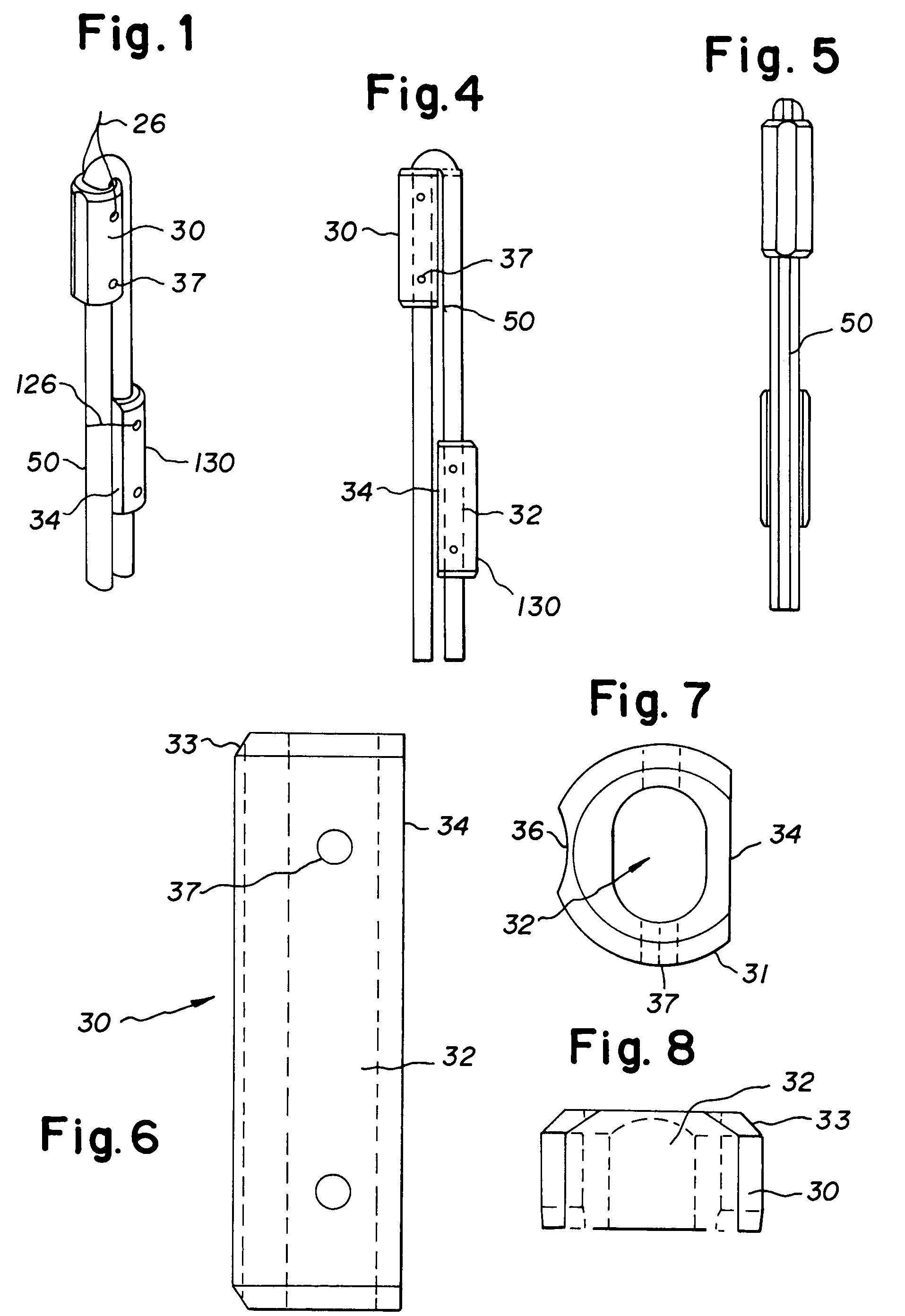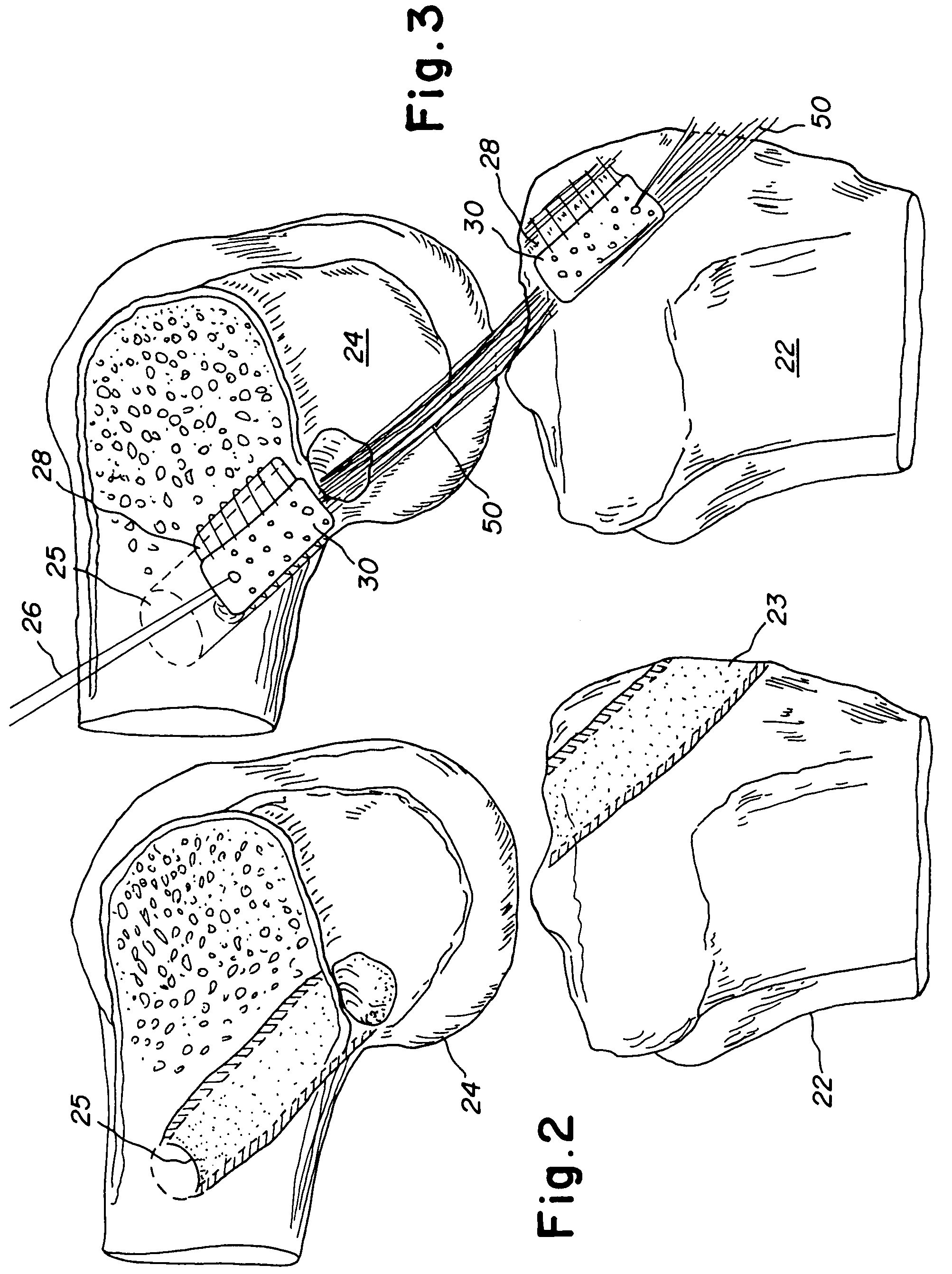Bone-tendon- bone assembly with cancellous allograft bone block
a technology of allograft and bone block, which is applied in the field of surgical implants, can solve the problems of acl reconstruction, abnormal anatomy, and chronic knee pain, and achieve the effects of promoting new bone growth, accelerating healing, and providing overall strength and initial durability to the structur
- Summary
- Abstract
- Description
- Claims
- Application Information
AI Technical Summary
Benefits of technology
Problems solved by technology
Method used
Image
Examples
Embodiment Construction
[0034]The preferred embodiment and best mode of the present invention is shown in FIGS. 1 and 4-8.
[0035]As shown in the drawings, a reconstructed bone-tendon-bone (B-T-B) assembly 10 for a knee joint is shown in FIG. 1 in accordance with the present invention. The cruciate ligament reconstruction surgical operation can be conducted as an open orthopedic surgery or through arthroscopic surgery. While the description of the invention is primarily directed to knee reconstruction, the present invention can easily be adapted to other joints requiring ligament or tendon replacement.
[0036]A number of surgical methods and variation of the same can be used in the knee tendon reconstructive surgery. Representative methods which are exemplary but not exclusive or limited are referred to as the Lipscom et al. Technique, the Puddu Technique, the Zaricznyj Technique, the Zarins and Rower Techniques and are set forth and fully explained in Chapter 29, Knee Injuries, Campell's Orthopaedics (1998, 9...
PUM
| Property | Measurement | Unit |
|---|---|---|
| diameter | aaaaa | aaaaa |
| diameter | aaaaa | aaaaa |
| thickness | aaaaa | aaaaa |
Abstract
Description
Claims
Application Information
 Login to View More
Login to View More - R&D
- Intellectual Property
- Life Sciences
- Materials
- Tech Scout
- Unparalleled Data Quality
- Higher Quality Content
- 60% Fewer Hallucinations
Browse by: Latest US Patents, China's latest patents, Technical Efficacy Thesaurus, Application Domain, Technology Topic, Popular Technical Reports.
© 2025 PatSnap. All rights reserved.Legal|Privacy policy|Modern Slavery Act Transparency Statement|Sitemap|About US| Contact US: help@patsnap.com



